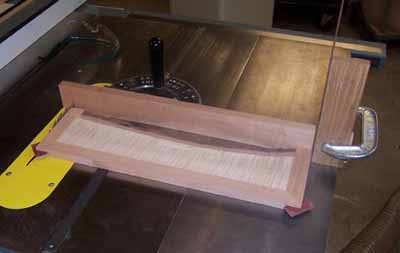This is the second type of relative dimensioning...
using parts you have already made to determine the size
of new parts.
There are hundreds of examples of how the power of this
particular method can be applied... here I'll share
one to get you thinking...
I'm building a new jewelry chest for a customer...
a box of drawers with doors if you will.
Wanting to use knife hinges for the doors, I know from
past experience that the total carcass length needs to
be 0.070" longer than the final door length...
this makes for a sweet swinging knife hinge
installation.
Soooo... the doors are built... and it's
time to cut the carcass parts to final length.
Two options here...
Option 1...
Measure the length of the doors (about 16 - 7/16"),
then add the clearance (0.070"), total them up...
and find a way to set a stop on my saw to that exact
number.
Bad choice.
Option 2...
The power of relative dimensioning...
I cut the carcass sides to the exact required length
by simply using the doors themselves plus a piece of
scrap to fix a stop on my saw.
The edge of the door is flush against the blade...
the piece of scrap is equal to the clearance I want...
and there goes the stop.
Remove the doors and cut the carcass sides to that
dimension... and they will be perfect.
Now... I do not know exactly what the actual
dimension is... but I don't care.
It's the power of relative dimensioning.
There are many other forms of this technique
as well.
I'll share more later.
For now... think about how you can use the
power in your own work...
Anytime you reach for a tool with numbers on it...
try and find a way to use relative
dimensioning.
Thats all for now.
Knipfer
|

|
|



